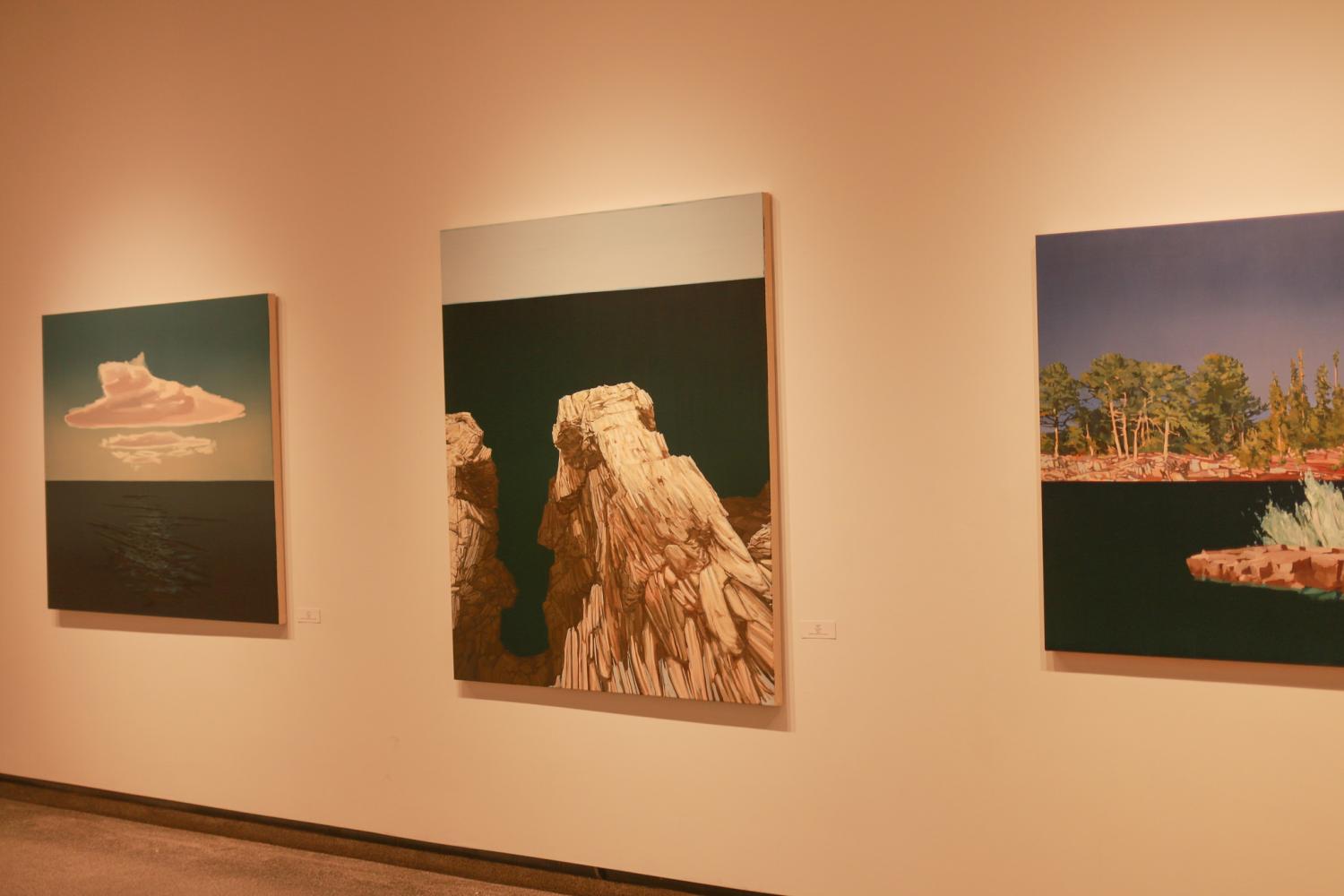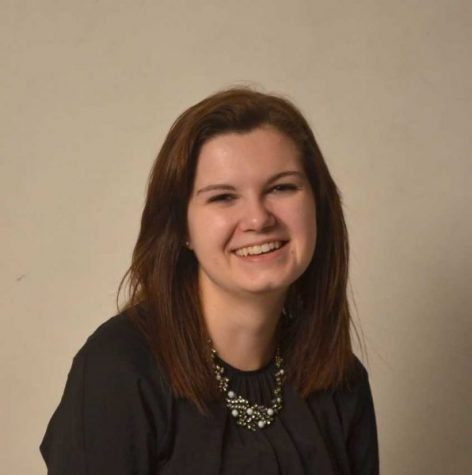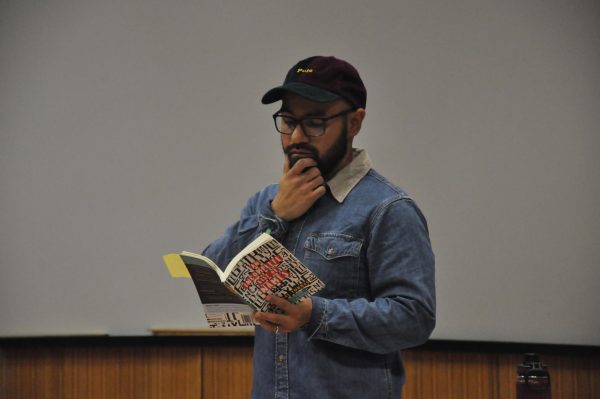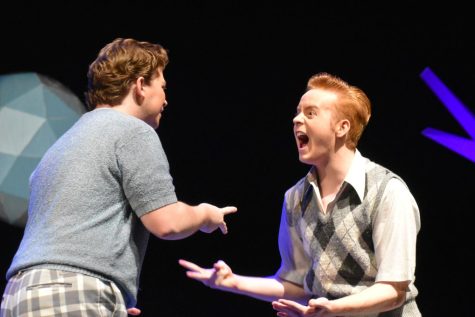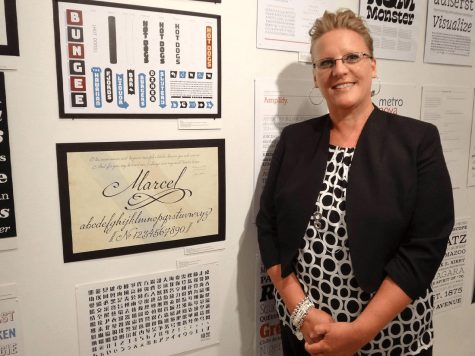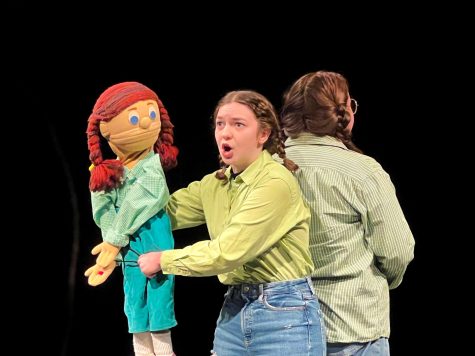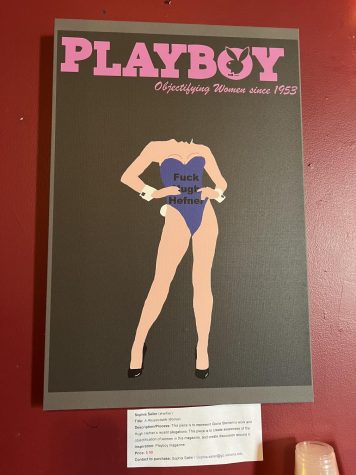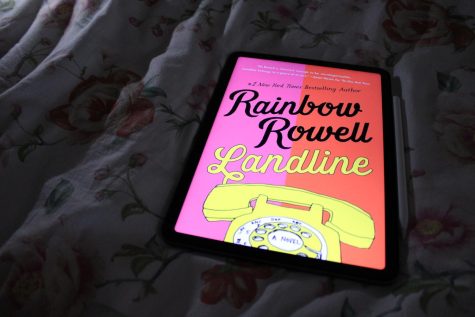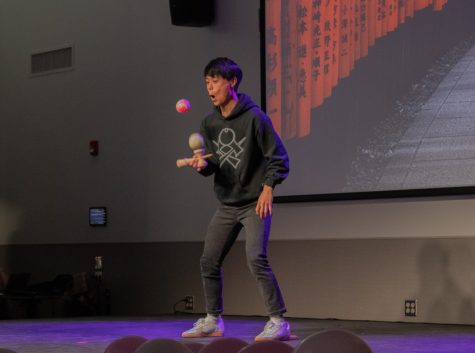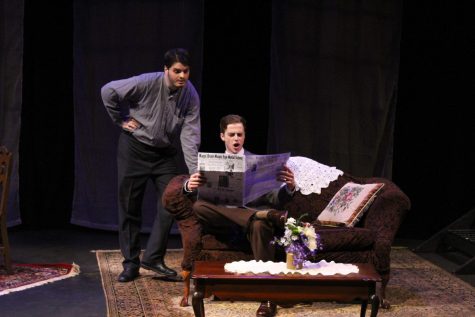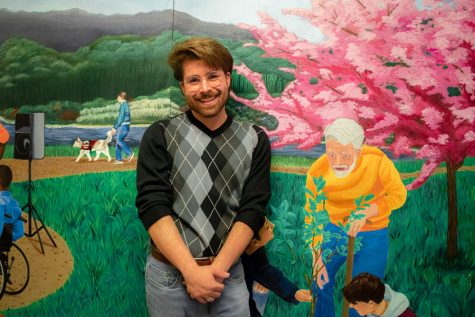New Mexico artist showcases paintings, holds reception
Three of Carey’s paintings show Carey’s vantage point on Rabbit Island in Lake Superior during his most recent artist residency. Carey has been selected to do artist residencies in several locations around the world, including the Arctic Circle.
September 6, 2017
Watkins Gallery displays collection of Lake Superior paintings
Winona State University is showcasing a series of paintings by New Mexico artist Beau Carey titled ‘Swell’ in the Watkins Gallery from Aug. 21 to Sept. 13.
Carey held an artist reception in the gallery last Wednesday to talk about the series that was conceptualized during his residency on Rabbit Island in Lake Superior.
Lydia Hoelzlhammer, a senior graphic design major at Winona State, attended the reception with Carey on Wednesday, Aug. 30.
“I love the way he takes inspiration from the natural world and puts it in his paintings,” Hoelzlhammer said.
By working in a studio, the artist has complete control over everything. Working in the field is the exact opposite. An artist has no control.
“A huge component of what I do is working in the field. I almost look at that as prose and then I come back to the studio and take little pieces of that prose and make more refine poetry,” Carey said.
Carey has been selected to do several residencies over his career in which he is selected to travel to a place to make work at that place for a certain amount of time whether it be two weeks, a month, even up to a year.
Carey loves being out in the landscape and working with the conventions of a landscape artist, particularly the horizon line, which is seen throughout his works.
“I think the horizon line is the greatest western pictorial convention—that we can draw a line across the page to evoke the landscape,” Carey said.
Carey said his paintings are documents of his experiences that express things that a photograph cannot reveal.
If there is dust in his paintings, Carey will leave it there to remember that day was really windy. If it was hot, he will remember it by the way his oils were behaving and how cold it was because the marks made would be big and clumsy because of his mittens.
Conditions are constantly changing when working in the field and Carey tries to adjust his paintings to match those changes, even though they do not work out all the time.
“Even if the painting is terrible, I never touch them up when I’m back in the studio. You can’t replicate that experience out there,” Carey said.
Carey also likes places that have an extensive history and tries to represent that in his paintings by layering different colors or adding abstract ideas.
Back in 2012, Carey did a residency in the Arctic Circle where he spent close to a month on a ship with 28 other artists.
The Arctic Circle has a history of whaling and Carey represented that by adding abstract ideas into the landscape. One was a slash right in the middle of the canvas to represent the cutting of blubber for the whaling industry.
Carey also looks for different ideas that will stick with him for a long time, such as something being so clear that it can distort reality.
The air in the Arctic Circle was so clear and dry and there was nothing to give a scale, so distances were deceptive. A glacier might have appeared to be a quarter of a mile away, but would actually be five miles away.
“It’s incredibly disorienting and that came to be a constant issue as I was working out there,” Carey said. “It was something that I was constantly thinking about and an idea that will always stick with me.”
In 2015, Carey did a residency on Rabbit Island when a doctor in Manhattan bought the island off of Craigslist, then partnered with Northern Michigan University to create an artist residency.
“I heard about residency in the New York Times where they mentioned there are so many Instagramable [sic] moments. Then I was thinking about Instagram as this square so I ended up painting on circles,” Carey said.
In his paintings from this residency, Carey adds strong horizontal lines, which controls how you move through the painting.
“Diagonals try to draw you into a work whereas horizontals become these barricades where you can’t pass in your mind’s eye from the foreground into the background,” Carey said.
Carey spent the majority of the time there by himself and the isolation kept hitting him in different ways like being stranded in the middle of the lake. So, the lake became this barrier for him.
Carey represented this idea in some of his paintings by adding an ‘X’ over the entire painting to represent the idea of blocking the landscape. There was so much surface and depth that the water was like a barrier and Carey represented this by making the water a solid stretch almost like a wall.
“I’m from the desert, so Lake Superior was too much lake for me,” Carey said.
Painting the water was also like trying to predict the unpredictable and Carey brought that idea through the splashes and little bits of swells in his paintings.
Carey said there are more to paintings than just copying reality. An artist can make observations that a photograph cannot do.
“Just do it. Ignore the tips you were taught. It’s not about making it pretty. It’s about making something memorable,” Carey said.























































